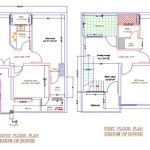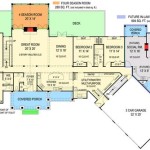The Journey to a Smooth House Move: Essential Aspects to Consider
Relocating to a new home can be a daunting task involving multiple steps and essential considerations. To ensure a seamless transition, it's crucial to carefully plan and execute each phase of the moving process. This guide will delve into the key aspects of planning a successful house move, empowering you with the necessary knowledge and strategies.
Declutter and Sort
Decluttering your home before packing is a wise move. Sort through belongings and discard or donate items you no longer need. This reduces the volume you need to pack and transport, saving both time and effort. Consider holding a yard sale or donating to charities to clear out unwanted items.
Create an Inventory
Creating a detailed inventory of your belongings is highly recommended. This will assist not only with packing organization but also with insurance claims in case of any unforeseen incidents during transit. Categorize items room by room and note their condition. Take photos or videos for added documentation.
Secure Packing Materials
Gather sturdy moving boxes, packing paper, bubble wrap, and packing tape. Choose boxes of various sizes to accommodate different items. Invest in quality packing materials to ensure your belongings remain protected. Consider purchasing reusable plastic bins to save money and minimize waste.
Pack Methodically
Start packing non-essential items first. Pack heavy items at the bottom of boxes and distribute weight evenly. Use crumpled paper or bubble wrap to fill empty spaces and prevent items from shifting. Label boxes clearly with their contents and destination room. Avoid overpacking to prevent damage.
Hire Professional Movers (Optional)
If your move involves a significant amount of furniture or heavy items, consider hiring professional movers. They offer packing, loading, transportation, and unloading services, saving you time and physical effort. Obtain quotes from multiple companies and compare their services and rates.
Clean and Repair
Before leaving your old home, conduct a thorough cleaning. This demonstrates respect for the property and ensures you receive your security deposit back. Attend to any minor repairs, such as patching holes in walls or fixing leaky faucets. Leave the home in a clean and well-maintained condition.
Plan Utilities and Services
Arrange for utilities to be connected at your new home on the day of your move. This includes electricity, gas, water, and internet. It's also important to inform your current utility providers of your move and cancel services at your old address.
Notify Important Parties
Update your address with the post office, banks, credit card companies, and other organizations with which you have accounts. Inform friends, family, and neighbors of your move and provide them with your new address. Change your driver's license and vehicle registration.
Execute a Move-In Plan
Upon arriving at your new home, have a plan for unloading and unpacking. Prioritize unpacking essential items, such as toiletries, bedding, and medications. Assign specific rooms to each box and unpack methodically. It's a good idea to unpack your kitchen first to facilitate meal preparation.
Settle In and Unwind
Once the move is complete, take time to settle in and make your new house a home. Arrange furniture, unpack your belongings, and decorate according to your taste. Allow yourself time to adjust to the new environment and enjoy the comfort of your new abode.

Moving House Checklist The Ultimate Plan Help

How To Plan A Stress Free House Move The Property Hub

10 Ways Floor Plans Can Improve Your Home Move

How To Create A Floor Plan Before You Move

How To Plan Your Move In 12 Weeks Westcott Homes

House Move Checklist To Plan A Smooth Temporary

How To Create A Floor Plan Before You Move

How To Plan A Big Move Best Practical Moving Tips Day Ng

7 Tips Before You Move House Organised Chaos Dublin Moving

House Moving Tips Advice For Expert Moves








